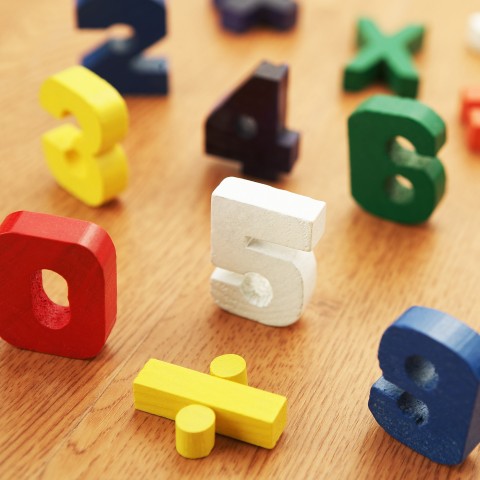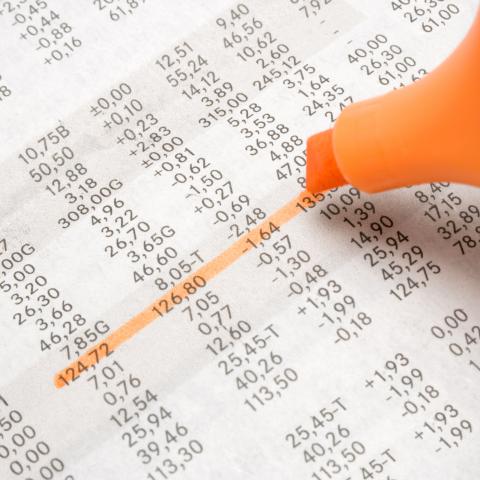Numbers are necessary in everyday life as you need them to express time, record dates, interpret recipe amounts, count objects, and the list goes on. Japanese numerical systems have unique features and they are very different from those in English.
For example, Japanese has a variety of counter words depending on different factors. Further, large numbers are counted by units of four digits while the Western system counts by that of three digits, and the differences only continue for numbers in the Japanese language.
Let’s start to learn basic Japanese numbers with JapanesePod101.com!
Table of Contents
- Counting in Japanese: Numbers 0-9
- Counting in Japanese: Numbers 10-99
- Counting in Japanese: Numbers up to 1000
- Counting in Japanese: More than 10,000
- Decimal Fraction / Fraction Numbers in Japanese
- How to Say Prices in Japanese
- Shopping Using Numbers in Japanese
- How to Give Your Phone Number in Japanese
- Conclusion: How JapanesePod101.com Can Help You Learn More Japanese
1. Counting in Japanese: Numbers 0-9
| 漢字 Kanji | ひらがな Hiragana | Reading | |
|---|---|---|---|
| 0 | 零 | ぜろ/れい | Zero/Rei |
| 1 | 一 | いち | Ichi |
| 2 | 二 | に | Ni |
| 3 | 三 | さん | San |
| 4 | 四 | し/よん | Shi/Yon |
| 5 | 五 | ご | Go |
| 6 | 六 | ろく | Roku |
| 7 | 七 | しち/なな | Shichi/Nana |
| 8 | 八 | はち | Hachi |
| 9 | 九 | く/きゅう | Ku/Kyū |
| 10 | 十 | じゅう | Jū |
These are the basic Japanese numbers for 0 to 10. You absolutely need to know these numbers in learning Japanese so that you can use them to build bigger numbers.
The standard way of reading 0 to 10 is also used in combination with counter words when you count anything, including actions and events. The Arabic numerals (0, 1, 2, 3…) are also commonly used in Japanese, but they often appear in horizontal texts, while the numbers in Kanji are mostly used in vertical texts, especially in formal writings and in particular situations.
As it’s written in the chart, there are some numbers which can be read two ways:
- 0 can be ぜろ(Zero) or れい (Rei). Nowadays, “Zero” is more common to read, and the Kanji 零 is rarely used.
- 4 can either be し(Shi) or よん (Yon).
- 7 can either be しち(Shichi) or なな (Nana).
- 9 can be either く(Ku) or きゅう (Kyū).
In most circumstances, both are acceptable. In general, よん (Yon), なな (Nana), and きゅう(Kyū) sound more casual and common.し(Shi), しち (Shichi), and く(Ku) sound more formal.
2. Counting in Japanese: Numbers 10-99
| 漢字 Kanji | ひらがな Hiragana | Reading | Literal reading in Japanese | |
|---|---|---|---|---|
| 11 | 十一 | じゅういち | jū-ichi | 10, 1 |
| 12 | 十二 | じゅうに | jū-ni | 10, 2 |
| 13 | 十三 | じゅうさん | jū-san | 10, 3 |
| 14 | 十四 | じゅうし/よん | jū-shi/yon | 10, 4 |
| 15 | 十五 | じゅうご | jū-go | 10, 5 |
| 16 | 十六 | じゅうろく | jū-roku | 10, 6 |
| 17 | 十七 | じゅうしち/なな | jū-shichi/nana | 10, 7 |
| 18 | 十八 | じゅうはち | jū-hachi | 10, 8 |
| 19 | 十九 | じゅうく/きゅう | jū kyū/ku | 10, 9 |
| 20 | 二十 | にじゅう | ni-jū | 2, 10 |
| 21 | 二十一 | にじゅういち | ni-jū ichi | 2, 10, 1 |
| 30 | 三十 | さんじゅう | san-jū | 3, 10 |
| 40 | 四十 | よんじゅう | yon-jū | 4, 10 |
| 50 | 五十 | ごじゅう | go-jū | 5, 10 |
| 60 | 六十 | ろくじゅう | roku-jū | 6, 10 |
| 70 | 七十 | ななじゅう | nana-jū | 7, 10 |
| 80 | 八十 | はちじゅう | hachi-jū | 8,10 |
| 90 | 九十 | きゅうじゅう | kyū-jū | 9,10 |
You can count from 1 to 99 with just ten numbers (0-10). Japanese numbers are simple and easier to use than English in this respect because there’s no exception or particular separate words such as “twenty” or “thirty.” In Japanese, these are expressed “two ten” and “three ten.” 21 is “two ten one.”
The Arabic numerals are commonly used and Kanji is also used in some circumstances. However, Hiragana isn’t used to express numbers. Like the cases of idiomatic words or a combination of Kanji (熟語 じゅくご Jukugo), Hiragana can become long to express and hard to decipher.
For more on Japanese numbers, YouTube has some great content. Please visit our JapanesePod101 YouTube channel and watch Learn Japanese Numbers 1 to 20 to learn Japanese basic numbers. You can listen to hear how they’re actually pronounced.
3. Counting in Japanese: Numbers up to 1000
| 漢字 Kanji | ひらがな Hiragana | Reading | Literal reading in Japanese | |
|---|---|---|---|---|
| 100 | 百 | ひゃく | hyaku | 100 |
| 200 | 二百 | にひゃく | ni-hyaku | 2, 100 |
| 300 | 三百 | さんびゃく | san-byaku | 3, 100 |
| 400 | 四百 | よんひゃく | yon-hyaku | 4, 100 |
| 500 | 五百 | ごひゃく | go-hyaku | 5, 100 |
| 600 | 六百 | ろっぴゃく | roppyaku | 6, 100 |
| 700 | 七百 | ななひゃく | nana-hyaku | 7, 100 |
| 800 | 八百 | はっぴゃく | happyaku | 8, 100 |
| 900 | 九百 | きゅうひゃく | kyū-hyaku | 9, 100 |
| 1000 | 千 | せん | sen | 1000 |
| 1100 | 千百 | せんひゃく | sen hyaku | 1000, 100 |
| 110 | 百十 | ひゃくじゅう | hyaku jū | 100, 10 |
| 111 | 百十一 | ひゃくじゅういち | hyaku jū-ichi | 100, 10, 1 |
From 100 to 1000, the pattern is basically simple and the same. In Japanese, as you can see in the chart, you can simply put the numbers 1 to 9 and add 100 to express 100 to 900 in Japanese. There are some exceptions for reading, such as 300, 600, and 800.
- 100 is hyaku, but 300 is read san (3) Byaku (100)
- 600 is roppyaku instead of “roku hyaku,”
- 800 is happyaku instead of hachi hyaku.
- 3000 is san (3) zen (100)
- 8000 is hassen instead of hachi sen
4. Counting in Japanese: More than 10,000
| 漢字 Kanji | ひらがな Hiragana | Reading | Literal reading in Japanese | |
|---|---|---|---|---|
| 10,000 | 万 | まん | man | 10000 |
| 100,000 | 十万 | じゅうまん | jū-man | 10, 10000 |
| 1,000,000 | 百万 | ひゃくまん | hyaku-man | 100, 10000 |
| 10,000,000 | 千万 | せんまん | sen-man | 1000, 10000 |
| 10^8 | 億 | おく | oku | |
| 10^12 | 兆 | ちょう | chō |
For the large numbers, Japanese numerals are divided into units of four (as in the four zeros in ten thousand). As you can see in the chart, 万 (man) is 10^4, 億 (oku) is 10^8, and 兆 (chō) is 10^12. One million is expressed as one hundred ten-thousands or 百万 (hyaku-man) in Japanese.
Note that you don’t need to put a 1 for 百 (hyaku) meaning 100 or 千 (sen) meaning 1000. But for units past 1000, you need to put a 1 in front. For example:
- 万 ichi-man ( 10^4 )
- 億 ichi-oku ( 10^8 )
- 兆 ichhō ( 10^12 )
You also read numbers in Japanese in the same pattern as mentioned before. You can count by simply chaining the numbers. However, there’s also an exception for the large numbers: 10^12 is 兆 ichhō instead of ichi-chō.
For the large numbers, the Arabic numerals are used in combination with Kanji, such as in 5万 (go-man), 4千万 (Yon-sen-man), 100億 (hyaku-oku), 3兆 (san-chō), etc.
Our JapanesePod101 YouTube video How to Count to 600,000 in Japanese is useful to help you learn large Japanese numbers. Please check it out to see how you can count large numbers in Japanese.
5. Decimal Fraction / Fraction Numbers in Japanese
1- Decimal Fractions
| ひらがな Hiragana | Reading | |
|---|---|---|
| 0.1 | れいてんいち | rei ten ichi |
| 0.03 | れいてんれいさん | rei ten rei san |
| 0.005 | れいてんれいれいご | rei ten rei rei go |
0 before the decimal point is read rei and 0 after the point can be either rei or zero. The decimal point is called ten which literally means “point.”
2- Fraction Numbers
| Japanese writing | ひらがな Hiragana | Reading | |
|---|---|---|---|
| 1/2 | 2分の1 | にぶんのいち | ni bun no ichi |
| 4/7 | 7分の4 | ななぶんのよん | nana bun no yon |
| 3/10 | 10分の3 | じゅうぶんのさん | jū bun no san |
For fraction numbers in Japanese, the number after / is read first. / is expressed as 分の (bun no).
6. How to Say Prices in Japanese
| 漢字 Kanji | ひらがな Hiragana | Reading | |
|---|---|---|---|
| 1 Yen | 1円 | いちえん | ichi-en |
| 5 Yen | 5円 | ごえん | go-en |
| 10 Yen | 10円 | じゅうえん | jū-en |
| 100 Yen | 100円 | ひゃくえん | hyaku-en |
| 1000 Yen | 1000円 | せんえん | sen-en |
| 5000 Yen | 5000円 | ごせんえん | go-sen-en |
| 10000 Yen | 10000円 | いちまんえん | ichi-man-en |
The Japanese currency is Yen and it’s read en. Expressing prices is very simple: you just use the numbers and en. The Arabic numerals are usually used for prices.
7. Shopping Using Numbers in Japanese
The phrase いくら (ikura) which means “How much” is often used in shopping.
The word “Price” is 値段 ねだん (nedan) in Japanese.
Examples for Shopping:
- A: このりんごの値段はいくらですか。
A: Kono ringo no nedan wa ikura desu ka.
A: How much is the price for this apple?B: りんご1つ120円です。
B: Ringo hitotsu hyaku ni-jū-en desu.
B: One apple is 120 yen. - A: これはいくらですか。
A: Kore wa ikura desu ka.
A: How much is this?B: それは259円です。
B: Sore wa ni-hyaku go-jū kyū-en desu.
B: It is 259 en. - A: 2万5千円の靴の値引きはいくらですか。
A: Ni-man go-sen-en no kutsu no nebiki wa ikura desu ka.
A: How much is a discount for the shoes of 25,000 yen?B: その靴の値引きは20%で、値段は2万円です。
B: Sono kutsu no nebiki wa ni-juppāsento de, nedan wa ni-man-en desu.
B: The discount for the shoes is 20%, and the price is 20,000 yen.
Please visit our JapanesePod101 YouTube channel to learn more helpful Japanese for shopping. The following are practical and useful Japanese for when you go shopping: Buying Items at a Register in Japan, Top 15 Must-Know Japanese Phrases to Go Shopping in Japan, and What’s Inside a Japanese Convenience Store?
8. How to Give Your Phone Number in Japanese
Telephone numbers are simple, as you can just chain numbers.
The words “telephone” and “number” are denwa and bangō in Japanese, respectively.
The only thing you should keep in mind is that “ – “ between numbers are read as no. Or, you can simply pause before giving the following numbers.
Examples:
- A: あなたの携帯電話番号は何ですか。
A: Anata no keitai denwa bangō wa nan desu ka.
A: What is your mobile telephone number?B:私の番号は090-1234-5678です。
B: Watashi no bangō wa zero kyū zero no ichi ni san yon no go roku shichi hachi desu.
B: My number is 090-1234-5678. - A: お問い合わせはフリーダイヤル0120-123-456におかけください。
A: O-toiawase wa furī daiyaru zero ichi ni zero no ichi ni san no shi go roku ni okake kudasai.
A: Please call to the toll-free 0120-123-456 for inquiries.
Conclusion: How JapanesePod101.com Can Help You Learn More Japanese
As we’ve seen, Japanese numbers are very simple to read. However, how to count things is a bit more complicated because there are a variety of Japanese counter words for each object, action, or event.
If you’d like to learn more about the Japanese language, you’ll find more useful content on JapanesePod101.com. We provide a variety of free lessons for you to improve your Japanese language skills.
On our YouTube channel, you’ll enjoy learning the Japanese language by watching videos and listening to actual Japanese pronunciation. For more about Japanese numbers, Numbers & Days, Learn Japanese Counters, and Learn Japanese Superstitions – Unlucky Numbers are helpful.
Further, for reading and writing Japanese, Learn to Read and Write Japanese is a good watch. For much more, please check out our YouTube channel!















